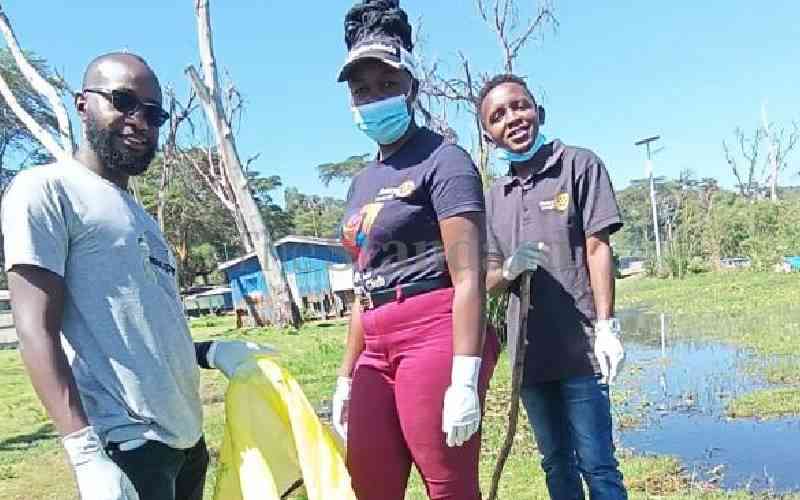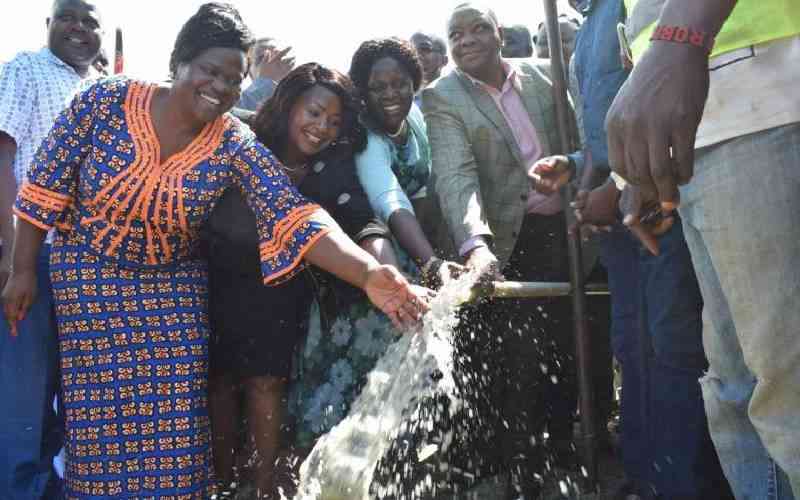By Antony Gitonga
The tourists and journalists seat strategically on both sides of the Mara River waiting for the spectacular sight of wildebeests migrating from Tanzania. The blazing sun is a small irritant compared to the sight they are about to behold.
Soon, hundreds of wildebeests jump into the swelling river in the annual migration dubbed the seventh wonder of the world.
It is like other wild animals, too, anticipate this great event. Tens of vultures perched on nearby trees patiently watch the river as hyenas nearby laugh. In the river, huge crocodiles wait for the day’s meal as, for sure, they will rip some of the wildebeests into pieces for dinner.
The river seems to pick up speed as the animals wade through. It sweeps away the weak and injured wildebeest. These are food for the waiting vultures, crocodiles and laughing hyenas.
The spectators are happy to capture these amazing moments on camera. It is termed ‘a once in a lifetime’ event.
Impressive phenomenon
For years, July and August have been spectacular as hundreds of tourists from all over the world gather in the Mara to witness the impressive phenomenon.
But as years go by, the river’s fortunes have drastically changed. Its water levels and quality have dropped raising fears that this extraordinary event may come to an end.
For regular visitors to the Mara, it’s obvious that the migration is not as breathtaking as it used to be a few years ago with some wildebeest easily crossing the river unlike the past when the flooded section of the river made things harder — and the show more interesting.
According Seif Hamisi of the World Wide Fund for Nature (WWF), which is involved in the Mara River basin management initiative, the river’s water levels have been dropping at an alarming rate with every passing year.
“In the past, the water levels were always high but now the Mara River has high and low peaks,” says Dr Hamisi.
So serious is the problem that in 2009 when Kenya experienced drought, wild animals literally walked across a dry riverbed.
Getting worse
Hamisi says the crisis in the basin is getting worse and points out to the destruction of the Mau Forest as one of the main reasons.
This has seen the quality and quantity of the water drop significantly with human activities coupled with climate change playing a significant role in the changes.
“It’s time we conserved our forests and turned them into holy grounds because if the Mara dries up, the stunning wildebeest migration will be a thing of the past and this will adversely affect the tourism sector.”
Stay informed. Subscribe to our newsletter
Hamisi says more than 90 per cent of families living in the Mara River basin do not have access to piped water.
The families, mainly in Narok and Transmara, have been forced to use water from the troubled river or its tributaries.
As the people use more water, the volume of the river is obviously reduced.
The destruction of the catchment area (Mau Forest) plays the biggest role in the drop in water levels in the basin.
Poor farming methods, massive water abstraction and the move to venture into huge land farming have played a part in the decline in water quality and quantity.
“Former forest land has been turned into tea and wheat estates, a move that has adversely affected the rain pattern and water flow in the basin,” he explains.
He says in1973 tea and forest cover stood at 621km2 compared to 1,948km2 in 2000.
Further damage
There has also been an increase in land under farming from 826km2 in 1973 to 2,504km2 in 2000 while in the same period closed forest cover has dropped from 1,008km2 to just 689km2.
After learning about the consequences of endangering the river, local communities have embarked on ways to restore the river and protect it from further damage.
According to the project manager of the Mara basin initiative, Kevin Gichangi, WWF is working working with various groups in conservation efforts.
He says they have encouraged hotels such as Olonana Lodge in the Mara to adopt waste-water management technologies and suppor the river bank protection and forest rehabilitation.
“Various groups are involved in agro-forestry, bee-keeping and goat-keeping. These activities have seen keep off from the forests,” says Gichangi.
Since the area is semi-arid, the initiative has introduced drip kit irrigation to women groups who were now producing vegetables as a source of income.
Apart from this kind of farming keeping them away from the forest, it uses less water.
Adequate water supply
“The programme goal is to ensure good quality and adequate water supply from the Mara River for sustainable ecosystem functioning and basic human needs,” he says.
Various government and private institutions have come together to conserve the rivers’ catchment area and ensure good farming practices are carried out. “We can only restore 40 per cent of the Mau and it is time we moved from extensive land farming to modern farming. This is the only way to succeed in our conservation efforts,” says Hamisi. The camp manager of Olonaan Lodge in the Mara, Leopold King, says the ‘death’ of the river could spell doom for the tourism sector and hence businesses such as his.
Planting trees
It’s on this note that the lodge has embarked on adopting waste-water management technologies, growing their own vegetables using drip irrigation and planting trees.
The lodge is one of the few in the Mara engaged in conserving the river and has won various environmental awards, thanks to its efforts.
“The Mara rakes in millions of dollars to the Government and it is time serious conservation measures were put in place to address the current problem which can actually be contained,” says King.
On her part, Sarah Kikwai from Chepkochun Women Group in Mara says her members are committed to saving the troubled river through modern farming.
“We are now using bio-gas, a technology that has seen forest destruction reduced and we are self-reliant in terms of food production. We have embraced the irrigation kit,” she says.
Under the drip-irrigation, Kikwai notes that a lot of water is saved mainly during the dry season adding that with their fresh and adequate produce, they have overcome malnutrition in the region.
The Crop Officer of Longisa division in Bomet District Mr John Too says they are educating farmers on the need to plant trees and engage in drip irrigation for food sustainability and conserving the river.
Other organisations which have embarked on conserving the Mau Forest to save the Mara are Masese Nyangores community and Emarti Mara conservation project.
 The Standard Group Plc is a
multi-media organization with investments in media platforms spanning newspaper
print operations, television, radio broadcasting, digital and online services. The
Standard Group is recognized as a leading multi-media house in Kenya with a key
influence in matters of national and international interest.
The Standard Group Plc is a
multi-media organization with investments in media platforms spanning newspaper
print operations, television, radio broadcasting, digital and online services. The
Standard Group is recognized as a leading multi-media house in Kenya with a key
influence in matters of national and international interest.
 The Standard Group Plc is a
multi-media organization with investments in media platforms spanning newspaper
print operations, television, radio broadcasting, digital and online services. The
Standard Group is recognized as a leading multi-media house in Kenya with a key
influence in matters of national and international interest.
The Standard Group Plc is a
multi-media organization with investments in media platforms spanning newspaper
print operations, television, radio broadcasting, digital and online services. The
Standard Group is recognized as a leading multi-media house in Kenya with a key
influence in matters of national and international interest.








